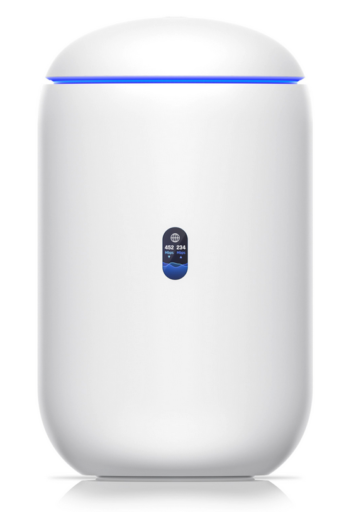A couple of weeks ago, my router (MikroTik hAP ac3) decided to quit, and I ended up needing a replacement as soon as possible. The MikroTik was a nice router; I don’t blame it for its early demise (I have reason to believe I might have misconfigured it). However, I wasn’t going to buy another MikroTik – it is just slightly more of a headache than I would like.
My initial idea was to go back to TP-Link or Linksys but only with OpenWRT firmware. However, a buddy of mine suggested going with the UniFi Dream Router. He uses UniFi equipment in his office, and it has proven to be better and more stable than MikroTik. Now, $200 for a router is a bit much, but then again, it is not out of the ordinary – some “gaming” routers are priced even higher. So, I figured I’d give it a go.
Now, I have a particular need for my router – it must be stable. I have about 14-16 devices online on average; I work from home and run my personal small server, so a stable network and internet are a must. My limited previous experience showed that some “home” routers are not very stable – network slowdowns, Wi-Fi devices sometimes disconnect, and some routers seem to need a hard reboot once per week. In this regard, MikroTik proved to be very stable (with a tiny caveat with my iPhone), until it wasn’t.
At this point, my benchmark is MikroTik, and even though the UniFi Dream Router has been running for only 2 weeks, it seems to be very good. The Dream Router costs twice as much as the hAP ac3, but it’s definitely worth it (so far). UniFi is a lot easier to configure; it has a very nice and easy-to-use web UI, graphs, stats, logs, and an overall solid feel. I know stability is not something that can be measured in 2 weeks, so let’s wait and see.
Now, as much as I would love to praise and hop around with the Dream Router, I have a couple of complaints. First and most annoying to me is the initial setup – here, UniFi must do something. On the initial setup, the Dream Router MUST have an internet connection; otherwise, you can’t set it up! In my case, it is impossible without having a backup router. I have a PPPoE configuration with a username and password to connect to the internet. So out of the box, the Dream Router can’t be set up with PPPoE configuration because it needs to connect to the internet to set itself up first. No internet => no Dream Router => no router => no internet… This is a horrible situation for a home/small office setting. The next complaint is still about the initial setup, which requires a mobile device – my question is why? Why do you need a mobile device to set up a router? What if you don’t have one? Or you have one but can’t install the UniFi app on it? Again, the Dream Router becomes a Dream Brick. I think UniFi needs to address those concerns.
Just a little step back to MikroTik, it doesn’t need the internet for the initial setup; however, if you reset it (via the button), then you must have an Ethernet cable and Winbox. Not the best idea, but in comparison to the UniFi Dream Router, you can get MikroTik going without the internet. But both still require Ethernet in the above scenarios.
Back to the Dream Router – as much as it is a router, it is more than that. The Dream Router has an SD card slot, willing and ready to connect UniFi cameras and other UniFi devices. I think it is a nice product integration, something that might bring additional business and let users integrate into the UniFi ecosystem. I can’t help but wonder if a standalone, single-purpose router (with WiFi) would have been a better and cheaper solution. I suspect that idea might not be very appealing from a business perspective, but I can’t shake the feeling that the Dream Router is some kind of gateway into the UniFi ecosystem.
At this point, that’s all of my complaints. So far, the Dream Router has been performing very well, but again, it’s only been a couple of weeks, so let’s wait and see.
